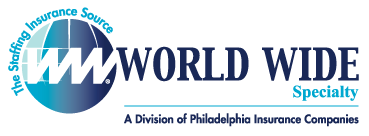Staffing Agency Risk Solutions: Dressing the Part
Starbucks, well known for their stringent dress code guidelines promoting a clean appearance, recently announced that they will be altering the employee dress code to allow baristas’ slightly more freedom of expression and individuality. News of the changes came as a relief to many workers to have been previously hiding their tattoos, piercings, and leaving their festive ties and other bits of personal flair at home. Starbucks announced the changes as part of their New Partner Experience Investments plan which focuses on creating a more enjoyable work experience for their baristas.
Starbucks is not the only major corporation with increasingly more flexible dress codes and standards, from tech giants to staffing agencies, businesses of all types and sizes are adjusting their dress codes. However, as we discussed in a previous blog post, studies have indicated that despite changing workplace cultures and environments, the majority of American professionals still have standards when it comes to what is and what is not appropriate work attire. Defining appropriate work attire has become a complicated endeavor. Acceptable work wear varies from location to location, job to job and industry to industry. As such, it can be hard for employees and employers to agree on whether or not jeans are acceptable in the office and if open toed shoes are too informal. Employers often have a difficult time establishing a dress code for their environment, trying to balance comfort, professionalism and work culture is no easy task.
A workplace attire policy should be designed to reflect the type of work being performed and the image that business owners strive to maintain. Experts suggest that a well-established employee dress code should serves as an extension of your brand identity and corporate culture. If your employees deal extensively with the public and business clients, it may be appropriate to require certain strict standards for their appearance as a means of reinforce your operation’s identity. On the other hand, if your employees have little or no contact with the public or your clients, perhaps the standards of dress could be more relaxed to improve employee comfort and moral.
When it comes to the staffing industry, image can be a useful tool in marketing your services to clients. While it is important that professionals are perceived as reputable and competent, staffing agencies might also choose to keep in mind the corporate cultures of their target clients. and craft their own employee attire standards to match. For example, if a firm is specialized in finding talent for creative or start-up operations, their business dress code might be more flexible that an agency which specializes in recruiting for large financial and professional service providers.
At World Wide Specialty Programs, we specialize in helping the staffing industry stay on top of their game to succeed. No matter what size, shape or focus a staffing firm may take; our specialists can help secure complete staffing industry solutions for risk management and liability control. We can help ensure that staffing agencies obtain the necessary insurance solutions to protect all their assets. For more information about all our staffing industry solutions please give us a call today at (877) 256-0468.




